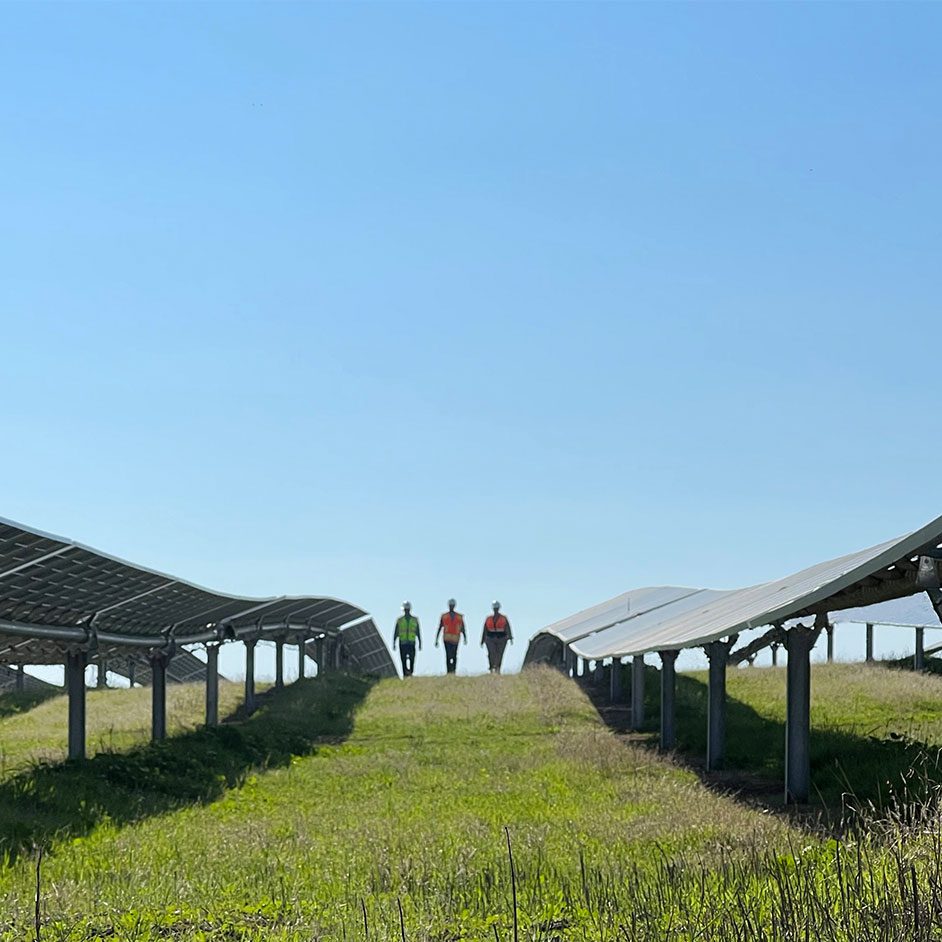
Two years ago, Canadian energy company Enbridge announced its intention to achieve net-zero greenhouse gas emissions across its pipeline network by 2050.
The transition will require additional investments in solar and other renewable energy projects to power its facilities—as well as partnerships with sustainability-minded consultants like LHB.
LHB was well-positioned to assist Enbridge, a longtime client. Enbridge officials have lauded LHB’s designs for oil pipelines and related facilities, and in 2018 LHB completed the design for a small fixed solar project at Enbridge’s office in Bemidji. “They value the quality we bring to projects and the understanding we have of their processes,” says LHB civil engineer Bob Lisi. “We’ve worked with their people for years.”
This spring, Enbridge retained LHB to provide project management services for the construction of solar arrays on seven sites in Wisconsin, Illinois, Indiana, Ohio, and Pennsylvania. Each project is located near an Enbridge facility and will generate between 10 and 15 megawatts of power. “The power will be used as it’s made, feeding directly into an operating pump or a compressor station right at the site, and at the right wattage,” Lisi says. “So there’s constant demand.”
Project designs are currently being finalized, and construction is expected to start this summer. (LHB’s survey team staked limits for construction and tree-clearing at several of the Enbridge sites in Wisconsin earlier this year.) In addition to managing schedules, critical path decisions, cost issues, and contractor needs, Lisi has been reviewing site civil elements and researching Nextracker, the tracking technology that allows solar arrays to follow the ever-changing path of the sun for maximal solar absorption and energy production. “Each project is unique because, even if the technology is the same, the terrain and other site features at each site are different,” Lisi says.
Last spring, Enbridge officials promised to reduce emissions intensity across its North American operations by 35 percent by 2030—putting its solar projects in the spotlight. The company already owns solar arrays that power operations in New Jersey (2.25 megawatt), Texas (2.5 megawatt), and Alberta (10.5 megawatt), but Lisi notes that these previous projects have been mostly small-scale, turnkey investments. “Enbridge is now taking a much more active approach to these projects,” Lisi says. “They’re making an investment in the intellectual capital it takes to develop solar and renewables. To me, that’s the sign of a transitioning company.”
Lisi expects the Enbridge solar program will expand with additional phases being implemented over the next 7 to 10 years. “This is a great opportunity for LHB to serve one of our best clients in their pursuit of transforming their business model,” Lisi says.

